Prince of Persia: The Lost Crown — Review
It's disheartening to witness how games that were part of our youth gradually fade into oblivion. Prince of Persia has been around since 1989, and Jordan Mechner, already the creator of the cult game Karateka, outdid himself. He crafted a phenomenon that left a lasting impact on the gaming industry. Later, the game received a high-quality sequel, a less successful attempt to transition into 3D, but it was ultimately saved by the Sands of Time trilogy. After that, two more decent games followed, but excluding mobile versions, there has been silence since 2010. A whole 14 years without a proper game, nothing. Even the remake of Sands of Time will be endlessly delayed. So, to some extent, I understand one of the reasons why someone might approach Prince of Persia: The Lost Crown with uncertainty.
Although the title is somewhat misleading. While the game is set in Persia and features the prince, it's not a game about the prince. For the first time in the series, he is not the main character but the goal that the protagonist must achieve. That protagonist is the young warrior Sargon, one of the mythical Immortals. They are a group of mercenaries who aren't truly immortal, but in the eyes of their enemies, they might seem that way. Thanks to their strength and abilities, they can overcome any opponent, no matter how formidable. Now, after Persia has been descending into chaos and poverty for 30 years, it's time for them to save it. They succeed, but it doesn't mean peace will reign in the land.
When Sargon and his comrades were celebrating their victory in the palace and even befriending the prince, the unthinkable happened – the prince was kidnapped. Now they must journey to the temple on the mythical mountain Qaf to rescue the prince. In black and white (if you're using the dark mode of our website), it may not sound particularly fresh, and the truth is the basic premise is something we've seen many times before. But in the end, you'll discover that the game offers a very compelling story, not just one or even two twists but a total of three plot twists, something even the unfortunate Horst Fuchs wouldn't offer you.

Moreover, it's not the only advantage of the story. The twists are unpredictable, and essentially, in a few key points, you can't be entirely sure which side is right and what the characters' motivations are. It all makes sense in the end, and it works cohesively. Don't expect any cinematic orgies, although they are present, and fairly well executed. A significant part of the story unfolds through dialogues between characters, presented in a static form during the game. It may not be as flashy as cutscenes, but surprisingly, the game features excellent voice acting. While you might not hear A-list actors, they truly breathe life into the characters.
Alright, you've reached the mountain Qaf, and your search for the kidnapped prince begins. But something is off. And I'm not referring to the events in the story. The temple on the mountain is crumbling, but not really. Soldiers who fled before you just a day ago have been dead here for years. Frozen ruins in the air and sporadically slowed passage of time hint at what's truly happening. The mountain is a place where time flows differently – both forward and backward. Several possibilities of how the timeline could have unfolded intertwine. If you played the Sands of Time trilogy, you know that time is a crucial element of the series, and it won't be any different here, although the game uses time a bit differently, both in the story and gameplay.
It's probably evident what the biggest change is compared to the Sands of Time trilogy, and I know many of you might grumble unnecessarily because of it. The Lost Crown is a 2.5D action-adventure, so the perspective has changed, but fundamentally, it hasn't lost anything that made Prince the Prince (with a lowercase 'p'). You'll still be slashing, running on walls, hanging on ledges, jumping over various obstacles, and more. The game combines acrobatics and action in a very engaging mix that quickly becomes second nature, and unless you create some prejudices against the game beforehand, you'll start having fun very quickly. Perhaps the first few enemies after entering the temple might be a bit dull, but things really get going fast.
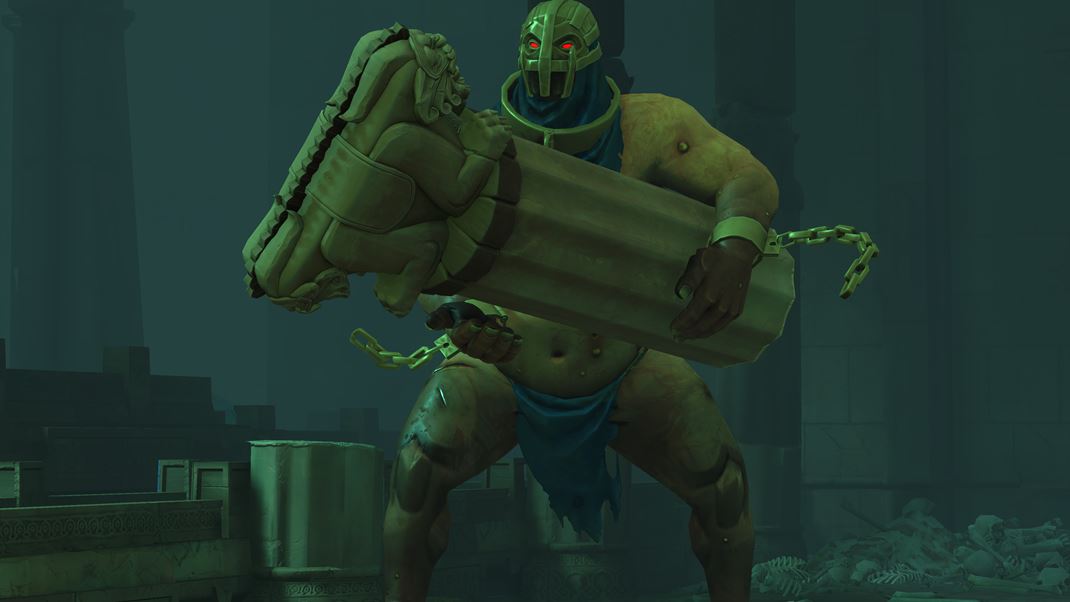
The second significant change compared to the Sands of Time trilogy? Not just the perspective, but also the game genre. This is not an ordinary linear 2.5D action-adventure; this is a metroidvania. A game where a vast interconnected world awaits, gradually revealing itself to you. Acquiring a new ability at one end takes you further at the other. The third, fourth... thirteenth. While the game unfolds on a single mountain, it consists of a total of 13 parts, each representing a completely different environment with new enemies, traps, challenges, and story portions awaiting you. Some are more extensive, and you'll visit them more frequently, while others are smaller, and you might only pass through them once or twice, especially if you aim to accomplish everything.
In essence, it's quite an extensive game, even larger than Sands of Time. There's certainly no shortage of content, but it's challenging to precisely evaluate how much time you'll spend with the game. It depends on you—your chosen difficulty level, your skill with the game, and what you want to achieve in it. Right from the start, there are two modes to choose from – one providing a map and helpful hints, and the other being explorative, allowing you to navigate the world without them. The main storyline alone takes around 15 hours on standard difficulty, perhaps a bit less if you're adept at the game. That's not bad at all. Then there's the additional content – all those hidden rooms, inaccessible places, and so on. Plus, there are 9 side quests, some of which lead you across the entire world. Consequently, the game could easily offer you 20 to 25 hours of gameplay, which is quite impressive.
The main story is clear: you're on a quest to find the prince, navigating through twists and discovering what this place truly is. The game reveals the past, explaining the origins of the predicament. It also shows you glimpses of your future, or rather, its possibilities. The overall experience is relatively straightforward. The game guides you where it needs you to be to progress further in the story. The side quests, however, offer a different experience. You might be tasked with defeating legendary soldiers and obtaining their medallions, or perhaps a character will ask for your help, like a pirate captain looking for assistance. You'll be collecting items, engaging in combat, and even searching for a stolen Moon.
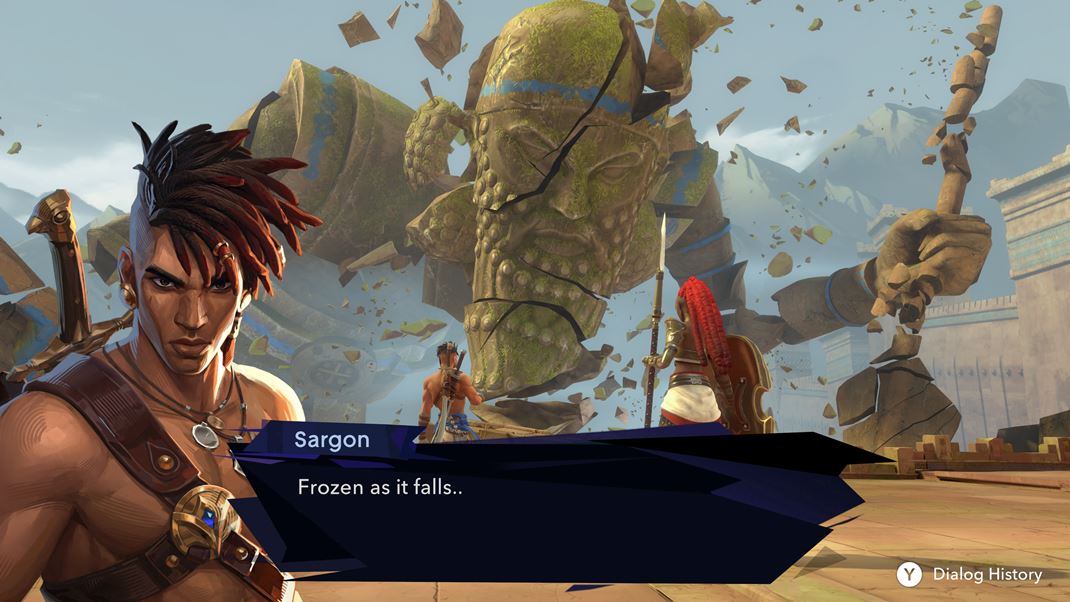
Ubisoft games lost their appeal to me a long time ago because they were too formulaic, and their content felt repetitive. Here, it's exactly the opposite. There's a ton of content, and it's very engaging. Even searching for hidden things (without them being part of a specific side quest) makes sense because, for instance, it reveals more about an ancient prophecy related to you. Other hidden corners present challenges, often of an acrobatic nature, that you'd want to overcome, and some are devilishly difficult, Meat Boy difficult. But you'll enjoy overcoming them because you not only conquer the game but, more importantly, yourself. And the side quests reward you with items that truly come in handy.
Not every character you encounter in the game necessarily wants to kill you or ask you for a favor. Some characters engage in conversation. The crazy old man says things that don't make sense, but perhaps, in the grand scheme, they make more sense than you'd think. The young boy becomes an unfolding mystery in the background of the overall plot. The young girl helps you navigate the world. The elder in the temple assists you in enhancing aspects of your character, and the goddess beyond the mysterious portal somewhere in the fiery dimension upgrades your weapons. The better off Sargon and his equipment are, the easier it becomes to progress through the game.
You unlock movement/time abilities gradually as the game requires. That's non-negotiable. However, you have control over the strength of your attacks, Sargon's health, the number of healing potions he can carry, and how much health he regenerates, as well as a bunch of passive abilities like resistance to certain types of attacks. Some improvements come from interacting with the mentioned characters, while others are adjusted through talismans on your necklace. The necklace has a limited number of slots, and even as you expand it, you'll always have to choose which talismans to equip. The game offers many talismans, influencing how you want to play. To some extent, you can personalize your experience. Similarly, you can customize special attacks by setting them in a pair of slots according to your preferred usage (or based on your energy management for special attacks).
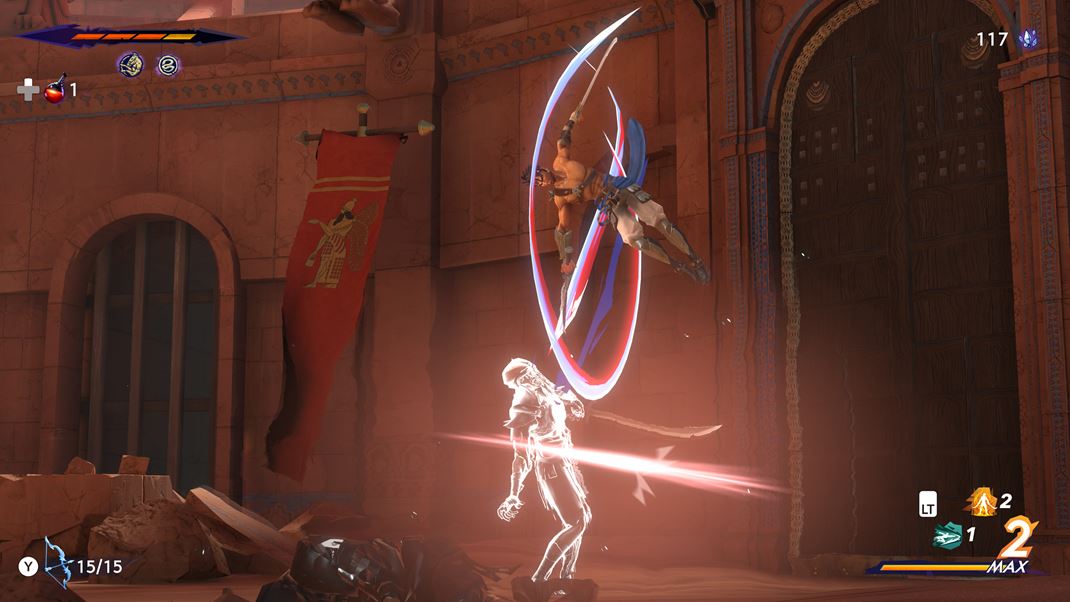
Gradually, you'll acquire a set of six special abilities that allow you to reach previously inaccessible places. Perhaps it's already a bit too much. One less would have been an ideal number. The game utilizes practically the entire gamepad for something, and when you gain all the abilities, you might occasionally find yourself groping for the right one at a given moment. There weren't many such instances, but there were moments when the game suddenly lost its great pace, and you had to stare at the environment, trying to figure out what it wanted from you right now. Especially in the mode where the game doesn't provide you with a map. You observe the surroundings, see the problem but don't know exactly how to solve it. So, you try one ability after another until you find the right one or the right combination.
Although the game had these occasional stuck moments, it can't be said that I was ever bored in it. It's too diverse and variable for that. Just those 13 completely different parts of the world take care of that. Backtracking isn't boring either, thanks to the densely placed statues for fast travel—almost none of that. Add to that more than 65 unique types of enemies, which some games don't have in entire series. The quality fluctuates a bit with bosses, where there are 9 in total, but some of the fights feel a bit uninspired. You'll notice that each boss has three phases, where they perform schematic attacks, and it's up to you to learn this pattern. Avoid all their attacks, and then unleash your strongest attack. Today, it's a cliché that we could overcome.
I can't say the game looks bad. It doesn't. It just looks somehow...forgettable. The combination of simple graphics and a rather bland art style ensures that this isn't a game you'd want to play at first glance. You can't criticize it for being ugly or anything like that because it's not. It's just a bit dull. When you hear the names of many games, you immediately have an image of what they look like. When you hear the name of this one, I have a good feeling about playing it, but not about how it looks. That's a bit of a shame. Ubisoft could have played a bit more with its identity and graphics. Fortunately, they did play with the music, or rather, they entrusted it to capable hands. Gareth Coker (Ori series) and Mentrix created a fantastic musical backdrop that greatly adds to the game's atmosphere.
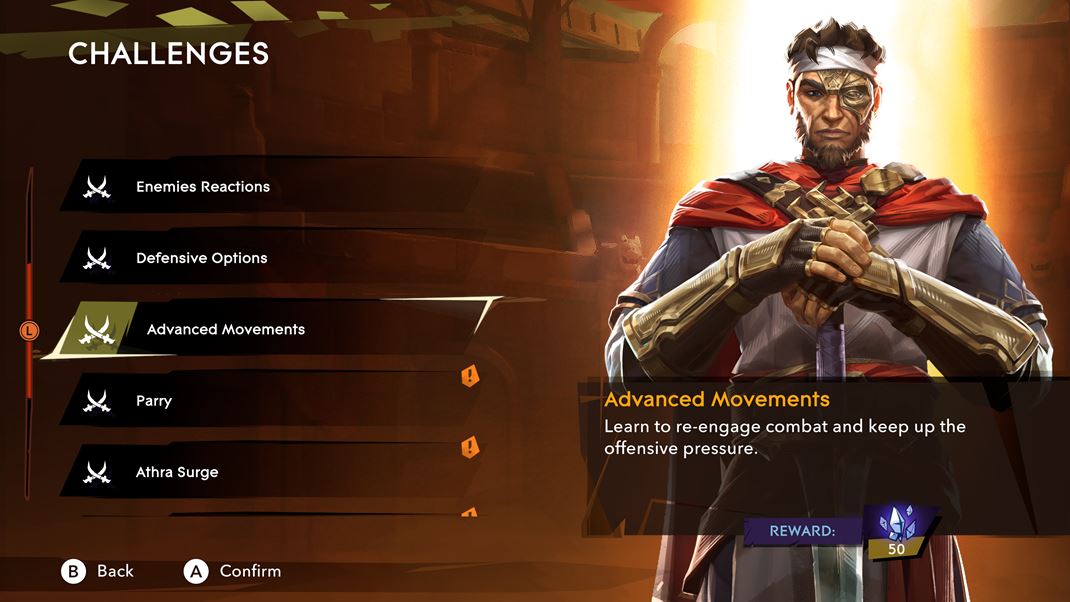
In a way, I'm surprised by how high-quality this game is. From Prince of Persia: The Lost Crown, I didn't expect such enjoyable gameplay, a long and intricate story, rich content, and responsive controls. But look at the developers; they have Rayman, Beyond Good & Evil, and similar titles under their belt. This is essentially a combination of elements that have worked well for them before. It's a bit of a shame that Ubisoft's talented teams don't create more similar games. Not every game has to be a sprawling and ultimately stereotypical Assassin's Creed or Far Cry. A smaller game can offer a great experience, and this is the proof. Several times, I just stopped for a moment, looked at a puzzle, and contemplated how brilliantly it was designed. That doesn't happen to me often. I also must praise the wide range of accessibility settings, making the game enjoyable even for those who might struggle with it under normal conditions.
Here, you'll find everything you could want from a game. It entertains you, challenges you, and keeps you engaged for a considerable amount of time, without a hint of monotony. The variability of content is truly enormous on all fronts, so you won't have a chance to get bored until the closing credits roll about 20 hours later. Despite some minor flaws, they don't significantly tarnish the overall impression to the extent that it would become bothersome. This is a must-play for all fans of the genre, the Prince of Persia series (including the first two parts), and anyone who enjoys 2D games with a touch of challenge.

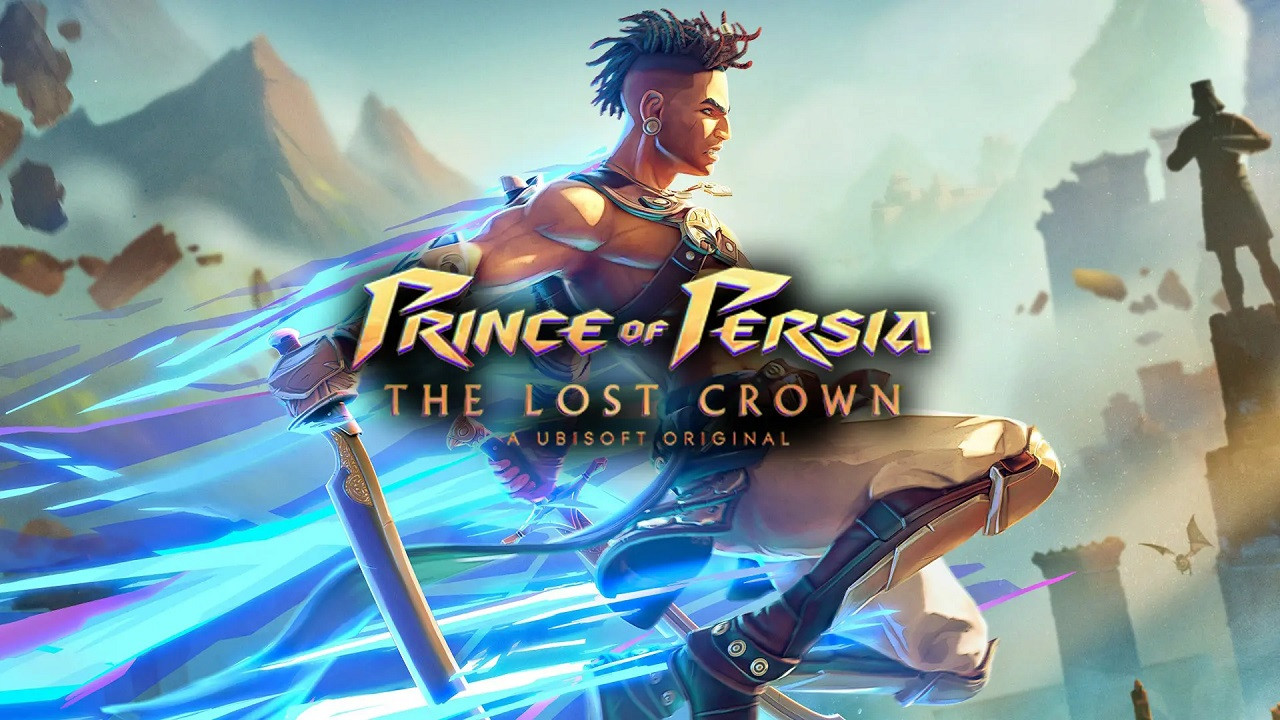
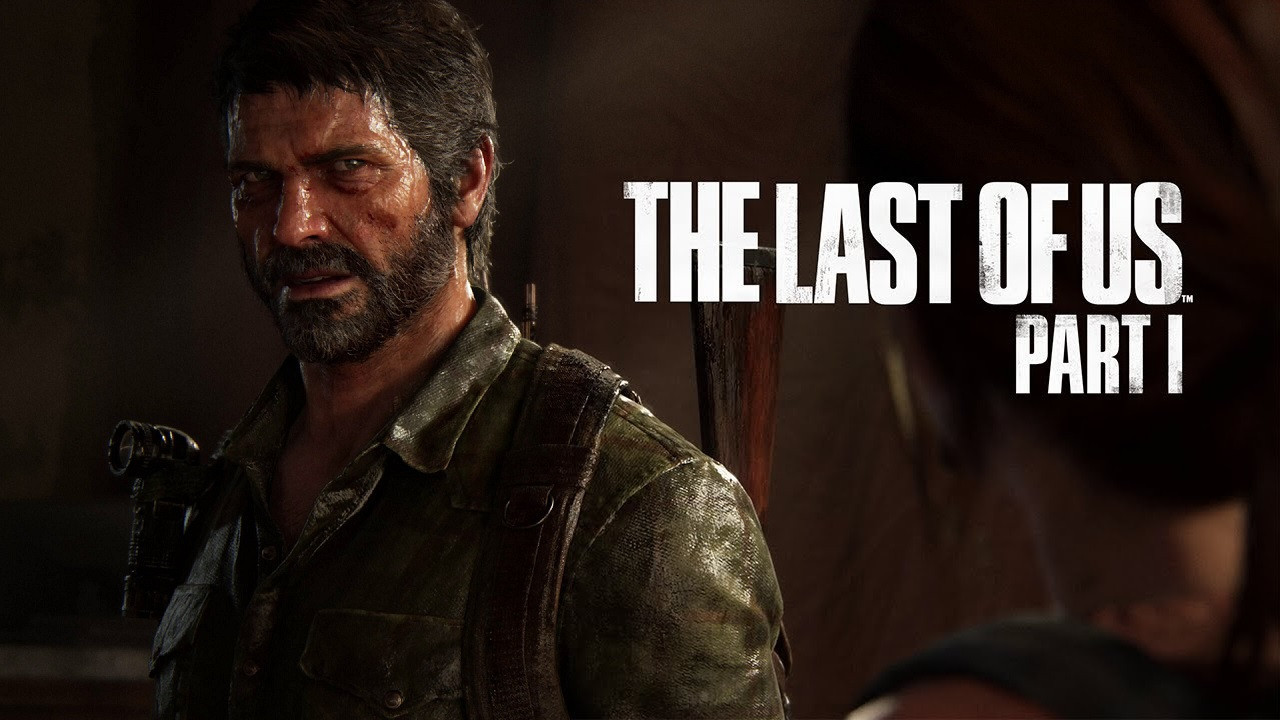
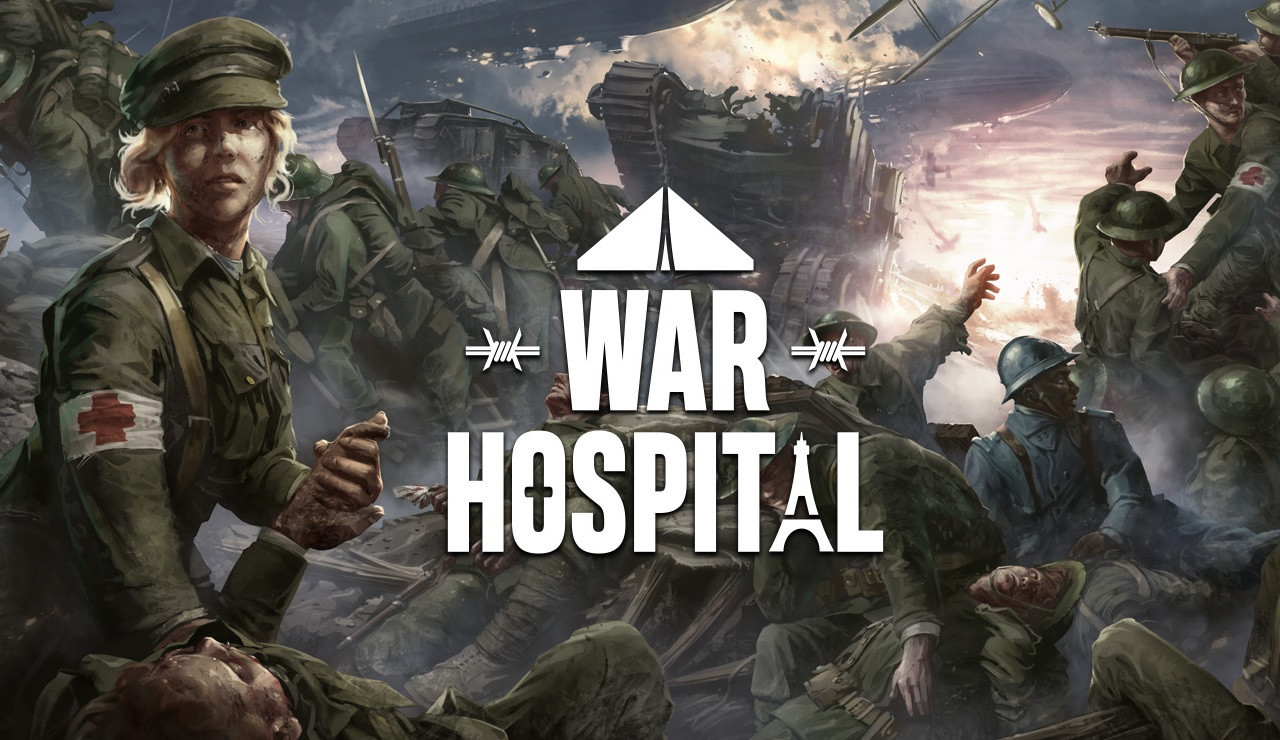



Comments (0)
No comments found